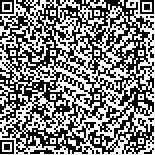孙莉敏,吴毅,尹大志,范明霞,臧丽丽,胡永善.健康成人在手部主动、被动和想象握拳运动时脑区激活特点的功能性磁共振成像研究[J].中华物理医学与康复杂志,2016,38(2):126-131
扫码阅读全文

|
| 健康成人在手部主动、被动和想象握拳运动时脑区激活特点的功能性磁共振成像研究 |
|
| |
| DOI: |
| 中文关键词: 功能性磁共振 主动运动 被动运动 想象运动 辅助运动区 |
| 英文关键词: Functional magnetic resonance imaging Active movement Passive movement Imaginary movement Supplementary motor area Brain imaging Hands |
| 基金项目:国家自然科学青年基金项目(81401859);国家科技部“十二五”支撑计划项目资助(2013BAI10B03);上海市闸北区卫生局资助项目(面上2014MS06);上海市卫生和计划生育委员会资助项目(201440634) |
|
| 摘要点击次数: 5019 |
| 全文下载次数: 7989 |
| 中文摘要: |
| 目的利用血氧水平依赖性功能磁共振成像(BOLD-fMRI)技术探讨健康成人手部在主动、被动和想象握拳任务下脑区激活的特点,为研究脑损伤后脑部重塑的作用机制提供依据。 方法选取20名健康成人参与研究,选择左右手主动、被动和想象握拳任务作为刺激模式,利用SPM8软件进行数据处理,统计各种运动任务下被激活脑区最强激活体素的T值及其坐标、激活体素值和激活体积。 结果手部主动运动及被动运动任务下,健康成人脑激活区大部分重叠,主要以对侧感觉运动区、同侧小脑及对侧辅助运动区较为显著,其激活的体素值和激活体积均较大。主动及被动任务下激活脑区以对侧感觉运动区中间部(手部代表区)最明显,强度最高。想象运动和主动或被动运动相重叠的主要激活区域为双侧辅助运动区。 结论健康成人在主动运动和被动运动任务下的激活脑区相似,提示可用被动任务代替主动任务来观察脑损伤偏瘫患者恢复过程中的脑区激活变化,进一步探讨脑部重塑的作用机制。 |
| 英文摘要: |
| Objective To assess any differences in brain activation during active, passive and imaginary movement of the hands using blood oxygen level-dependent functional magnetic resonance imaging (fMRI), and to provide references for the cortical reorganization in patients with brain injuries. MethodsTwenty healthy, right-handed, adult volunteers were studied. fMRI was performed during active, passive and imaginary fist clutching. Whole brain analysis and group analysis were applied to get the voxels, the volume of activation, the peak t-score and its coordinates. ResultsActive and passive movement both produced significant activation in the contralateral sensorimotor cortex, the contralateral supplementary motor area and the ipsilateral cerebellum. The sensorimotor cortex was the most frequently and most strongly activated brain area. Imaginary movement produced significant bilateral activation in the supplementary motor area. ConclusionsActive and passive movement induce similar brain activation patterns. This indicates that passive might replace active movement when observing activation of the brain′s cortex during the rehabilitation of patients with hemiplegia. |
|
查看全文
查看/发表评论 下载PDF阅读器 |
| 关闭 |